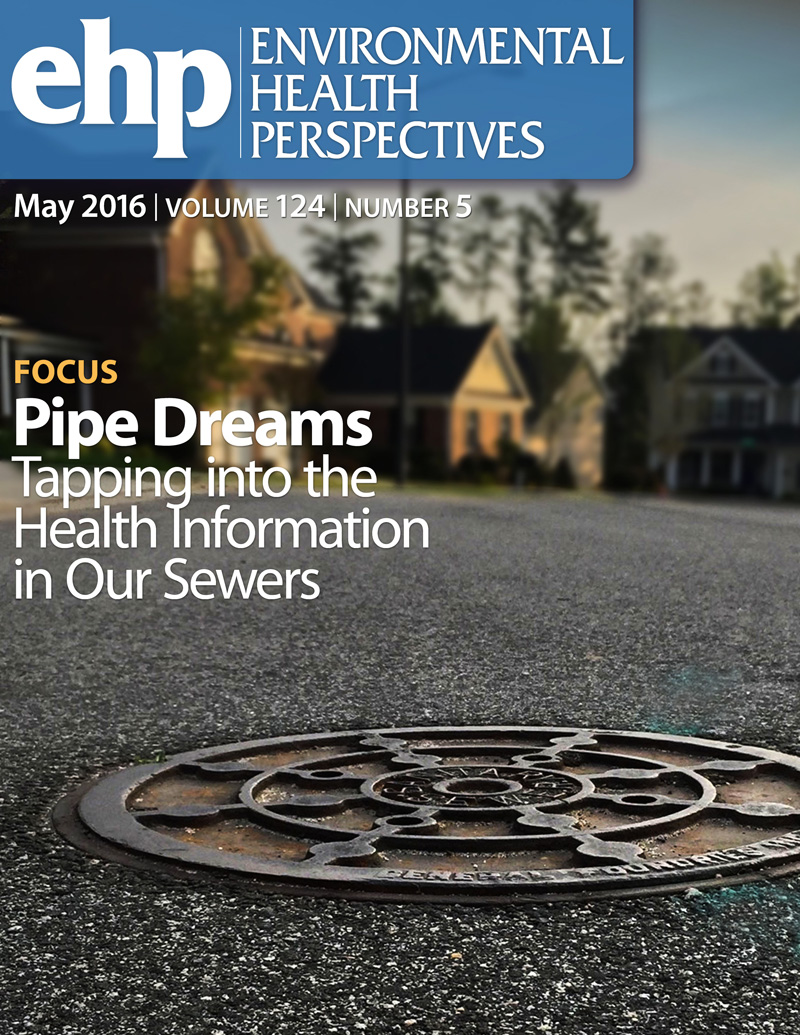Health Effects and Water Quality Following Low Pressure Events in Drinking Water Distribution Systems in the United States.
IF 9.8
1区 环境科学与生态学
Q1 ENVIRONMENTAL SCIENCES
引用次数: 0
Abstract
BACKGROUND Low pressure events (LPEs), defined as a water service disruption that presumably lowers system water pressure, can cause drinking water contamination resulting in increased illness risk to consumers. OBJECTIVES Examine whether LPEs increase the risk for highly credible acute gastrointestinal illness (HCGI) and acute respiratory illness (ARI) and compare water quality in exposed and unexposed areas in the United States. METHODS A matched cohort study was conducted during 2015-2019. For each LPE, household survey exposed areas were matched 1:2 with unexposed areas based on water main size and material at the point of repair, as well as the housing type and demographic characteristics of the local population from the most recent census tract. Water samples were collected to monitor physicochemical and microbiological water quality parameters. Households (HHs) were surveyed about water use and illness during the 2 weeks after the LPE. Multivariable log-binomial models clustered on utility and LPE number were used to investigate associations between LPE exposure and HCGI and ARI. RESULTS Five water utilities reported 58 LPEs, including planned maintenance (76%) and emergency (24%) events. Controlling for livestock near home, private well presence, number of people in HH, and travel away from home, exposed HH were at higher risk of HCGI compared to unexposed HH (risk ratio =1.20; 95%CI: 1.05,1.37). No associations between LPE and ARI were detected. Certain LPEs characteristics like pipe material, size, and depth were associated with an increased HH HCGI risk. HHs experiencing LPEs where low disinfectant residual, high adenosine triphosphate, or general Bacteroidales were detected in water following an LPE repair were also at a higher risk for HCGI. CONCLUSIONS LPEs were associated with 20% higher risk of HCGI in HHs. Planned improvements to water distribution system infrastructure, adherence to industry standard distribution repair practices, and water monitoring following pipe repairs could supplement community alert systems to reduce illnesses from LPEs. https://doi.org/10.1289/EHP15564.美国饮用水输配系统低压事件后的健康影响和水质。
低压事件(LPEs)被定义为可能降低系统水压的供水服务中断,可能导致饮用水污染,从而增加消费者的疾病风险。目的研究lpe是否会增加高可信度急性胃肠道疾病(HCGI)和急性呼吸道疾病(ARI)的风险,并比较美国暴露地区和未暴露地区的水质。方法2015-2019年进行匹配队列研究。对于每个LPE,家庭调查暴露区域与未暴露区域根据供水管道的大小和修复点的材料,以及最近一次人口普查区的住房类型和当地人口的人口特征进行1:2匹配。采集水样,监测理化和微生物水质参数。在LPE后的两周内,对家庭(HHs)进行了用水和疾病调查。以效用和LPE数为聚类的多变量对数二项模型用于研究LPE暴露与HCGI和ARI之间的关系。结果5家水务公司报告了58起lpe,包括计划维护(76%)和应急(24%)事件。控制了家附近牲畜、私人水井、HH的人数和离家旅行,暴露HH的HCGI风险高于未暴露HH(风险比=1.20;95%置信区间:1.05,1.37)。没有发现LPE和ARI之间的关联。某些lpe特征,如管道材料、尺寸和深度,与HH - HCGI风险增加有关。经历LPE的HHs在LPE修复后的水中检测到低消毒剂残留,高三磷酸腺苷或一般类杆菌,HCGI的风险也更高。结论slpes与HHs患者HCGI发病风险增高20%相关。有计划地改善供水系统基础设施,遵守行业标准的供水维修做法,以及管道维修后的水监测,可以补充社区警报系统,以减少lpe引起的疾病。https://doi.org/10.1289/EHP15564。
本文章由计算机程序翻译,如有差异,请以英文原文为准。
求助全文
约1分钟内获得全文
求助全文
来源期刊

Environmental Health Perspectives
环境科学-公共卫生、环境卫生与职业卫生
CiteScore
14.40
自引率
2.90%
发文量
388
审稿时长
6 months
期刊介绍:
Environmental Health Perspectives (EHP) is a monthly peer-reviewed journal supported by the National Institute of Environmental Health Sciences, part of the National Institutes of Health under the U.S. Department of Health and Human Services. Its mission is to facilitate discussions on the connections between the environment and human health by publishing top-notch research and news. EHP ranks third in Public, Environmental, and Occupational Health, fourth in Toxicology, and fifth in Environmental Sciences.
 求助内容:
求助内容: 应助结果提醒方式:
应助结果提醒方式:


